
Substrate
Overview of Substrate
What is Substrate?
Substrate is a cutting-edge platform designed specifically for building compound and agentic AI systems. It stands out as the world's first AI computer infrastructure, enabling developers to create intelligent software with ease. Unlike traditional frameworks like LangChain, which can feel bloated and inefficient, Substrate offers elegant abstractions and high-performance components tailored for multi-step AI workloads. At its core, it's a unified platform that includes optimized AI models, a vector database, a code interpreter, and a model router, all optimized for speed and parallelism.
This platform empowers users to describe tasks by connecting modular building blocks called "nodes," which form directed acyclic graphs (DAGs). Substrate then automatically tunes these workflows for maximum efficiency, reducing roundtrips and enabling batch processing where possible. Whether you're prototyping agentic flows or scaling production-grade AI applications, Substrate simplifies the process while delivering blazing-fast performance.
How Does Substrate Work?
Substrate operates on a simple yet powerful paradigm: developers define workflows using intuitive abstractions in Python or TypeScript. By installing the SDK via pip install substrate, you gain access to a comprehensive toolkit. Here's a breakdown of its key mechanics:
Node-Based Architecture: Workflows are built by chaining nodes, such as
ComputeTextfor text generation or integration with vector storage for retrieval-augmented generation (RAG). Each node represents a modular component, like prompting a model or executing code.Automatic Optimization: Substrate analyzes your workflow as a DAG and applies optimizations. For instance, it merges compatible nodes for batch execution, maximizes parallelism across models, and minimizes latency through fewer API roundtrips. This ensures that complex, multi-step tasks—like generating and summarizing stories from multiple prompts—run as fast as possible.
Futures and Asynchronous Handling: A standout feature is the use of "futures" for asynchronous operations, allowing seamless integration of parallel tasks. In the example code, you can fire off multiple story generations and then summarize them without blocking, making development feel natural and joyful.
Batteries-Included Components: No need to stitch together disparate tools. Substrate provides a model library for optimized inference, built-in vector DB for efficient similarity searches, a secure code interpreter for dynamic computations, and agentic control flow to orchestrate everything.
To get started, initialize a Substrate instance with your API key and define your nodes. Run the workflow with s.run(), and Substrate handles the execution on its compute engine, which is uniquely designed for AI-specific demands.
Core Features of Substrate
Substrate packs a punch with features that address common pain points in AI development:
High-Performance Compute Engine: Optimized exclusively for multi-step AI, it supports automatic workload tuning and parallelism, outperforming general-purpose setups.
Modular SDKs: Available in Python and TypeScript, with simple APIs that abstract away complexity. For example, formatting prompts with
sb.format()integrates outputs dynamically.Integrated Tools: Vector storage for handling embeddings, code interpreter for running Python snippets within workflows, and a model router to select the best model for each task.
Developer-Friendly Abstractions: Concepts like futures make asynchronous programming intuitive, reducing boilerplate code compared to alternatives like Hugging Face or OpenAI APIs.
These elements combine to create a platform where building compound AI—systems that leverage multiple models and tools—feels straightforward and efficient.
Main Use Cases and Practical Value
Substrate shines in scenarios requiring sophisticated AI orchestration. Here are some primary applications:
Agentic AI Development: Build autonomous agents that perform multi-step reasoning, such as research assistants that query databases, interpret code, and generate reports.
Workflow Automation: Automate tasks like content generation pipelines—e.g., creating stories on different topics and summarizing them—or RAG systems for intelligent search.
Prototyping and Scaling: Ideal for rapid prototyping of AI applications, from chatbots to data analysis tools, with seamless scaling to production via its robust infrastructure.
Replacement for Legacy Tools: Developers frustrated with LangChain's overhead or Pinecone's limitations find Substrate a clean, fast alternative that integrates everything in one place.
The practical value is immense: it accelerates development cycles, cuts costs through optimization, and enables high-quality outputs. For instance, in a demo, generating parallel stories and a summary takes minimal code but yields professional results quickly. This efficiency translates to real-world gains, like faster iteration in AI consulting or internal tools at companies like Substack and Maven.
Who is Substrate For?
Substrate targets developers and AI engineers who build intelligent systems. It's perfect for:
AI/ML Engineers: Those working on agentic or compound AI, needing a principled framework without the bloat.
Product Teams: At startups or enterprises (e.g., CTOs at Maven or Heads of AI at Substack) seeking a unified platform to replace fragmented tools.
Independent Consultants: Professionals recommending streamlined solutions for clients, as one user noted regretting not suggesting it sooner.
Researchers and Prototypers: Anyone experimenting with multi-model workflows, from natural language processing to code generation.
If you've outgrown basic APIs and crave a developer experience that's both powerful and joyful, Substrate is your go-to.
Why Choose Substrate?
In a crowded AI landscape, Substrate differentiates itself through speed, simplicity, and focus. User testimonials highlight its appeal:
Mike Cohen (Head of AI & MLE at Substack): "I LOVE this API paradigm. Finally, a principled agent framework. Sooo clean, kind of makes LangChain look bloated."
Shreyans Bhansali (CTO at Maven): "Substrate is the developer experience I always wanted. We tried LangChain, Pinecone... Now we just use Substrate."
Other feedback echoes this: blazing speeds, easy demos, and first-principles design. One user called it "sick" compared to internal versions, while another praised the futures concept for making async feel effortless.
Compared to competitors, Substrate avoids unnecessary complexity, offering a "batteries-included" approach that boosts productivity. Its pricing (accessible via the platform's Pricing page) and docs make adoption straightforward, with no steep learning curve.
How to Use Substrate: Best Practices
Getting up and running is simple:
Installation: Run
pip install substratefor Python or equivalent for TypeScript.API Setup: Obtain your key from the Substrate dashboard.
Build a Workflow: Define nodes, connect them (e.g., parallel ComputeText calls), and execute with
s.run().Optimize and Deploy: Leverage auto-tuning for production; monitor via docs and nodes dashboard.
For best results, start with small tasks to grasp node chaining, then scale to agentic flows. The platform's docs provide examples, ensuring you harness its full potential without trial-and-error.
In summary, Substrate revolutionizes how we build AI software, making compound and agentic systems accessible and performant. Whether for innovation or efficiency, it's a game-changer that aligns with modern AI needs—fast, modular, and future-proof.
Best Alternative Tools to "Substrate"
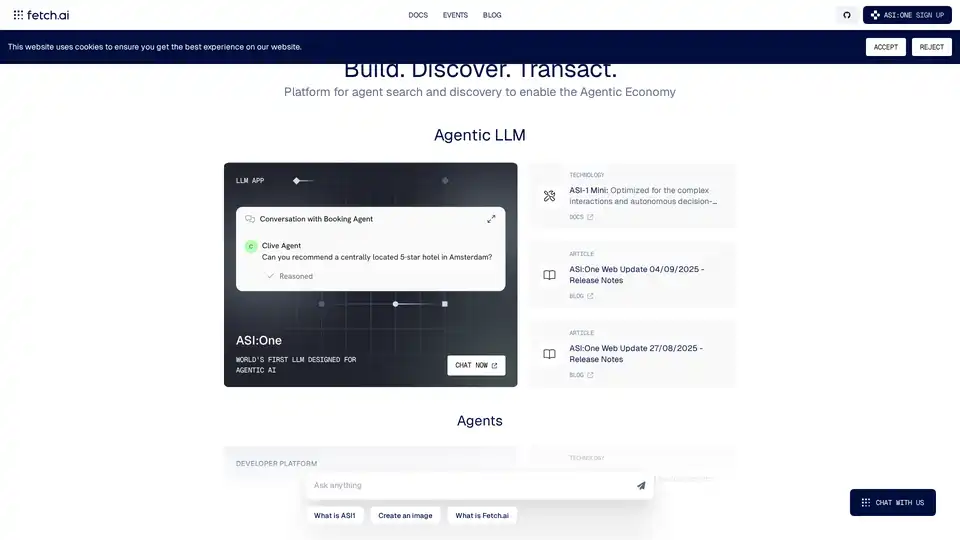
Fetch.ai is a platform that enables the Agentic Economy, allowing users to build, discover, and transact with AI agents. It features tools like Agentverse for creating and exploring agents, and ASI Wallet for accessing the ASI ecosystem.
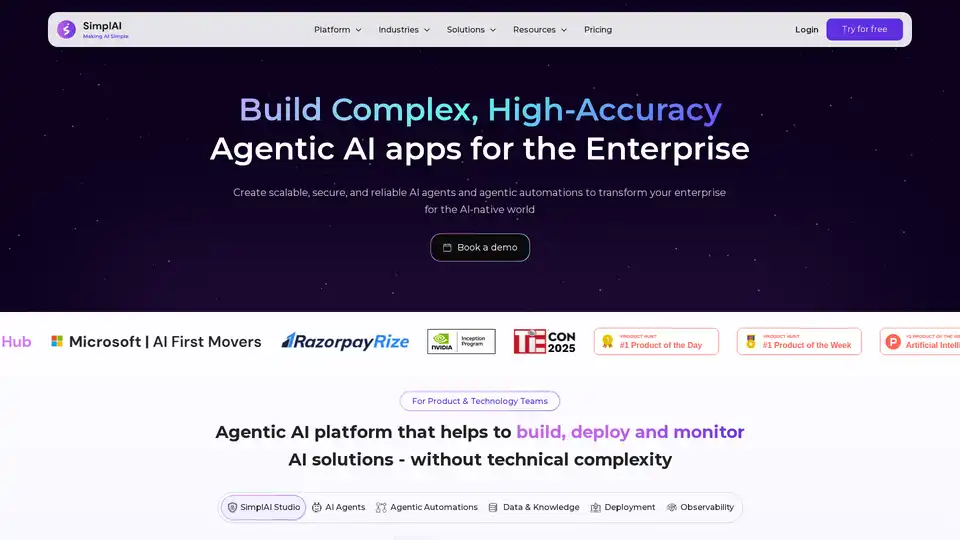
SimplAI is a secure, scalable Agentic AI platform designed for enterprise automation. Build complex AI applications for finance, healthcare, insurance, and legal sectors. Try it for free!

Sigma AI Browser is an AI-first agentic browser that automates online activities, turning your browser into an action engine for bookings, data extraction, and more. Join the waitlist now!

Bika.ai is the world's first AI organizer that helps solo entrepreneurs build agentic AI teams with automation, databases, dashboards, and documents. Streamline workflows with pre-built templates for various business functions.

Blueflame AI is an agentic AI platform designed for private equity, investment banking, and M&A professionals. It automates sourcing, diligence, research, and deal execution to save time and enhance decision-making.

Aissist is an agentic AI platform for enterprise automation, providing digital employees for sales & service. Deeply integrated, reliable, affordable & trusted by 400+ businesses.

Cloudgov.ai is an Agentic AI-powered Multicloud FinOps platform for autonomous cloud cost optimization. Reduce waste, boost margins, and drive efficiency across AWS, Azure, and Google Cloud.
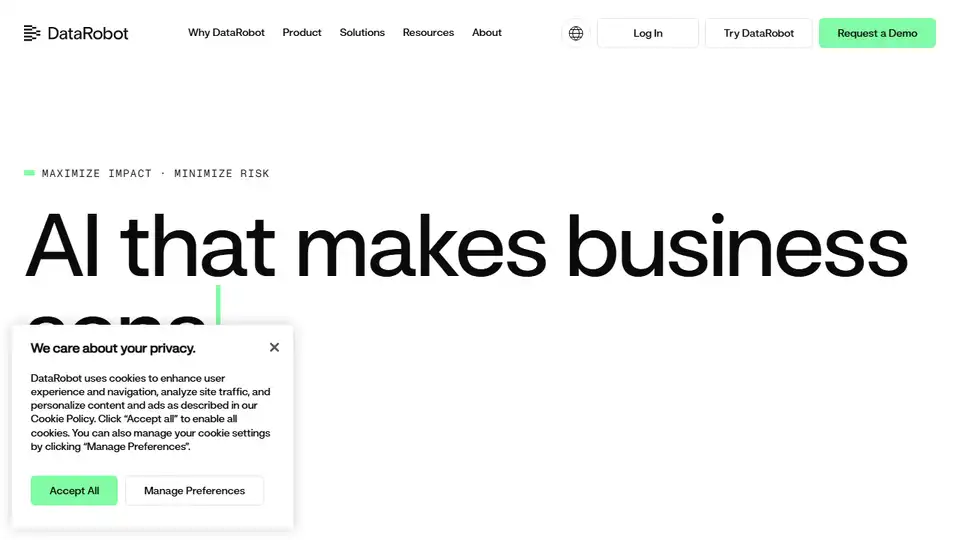
DataRobot offers an agentic AI platform designed for enterprise automation, helping businesses maximize impact and minimize risk with scalable, secure AI agents.

symplistic.ai is an AI company specializing in Agentic AI solutions, leveraging IBM watsonx to create intelligent AI agents that solve real business problems. Get AI consulting and innovation services.
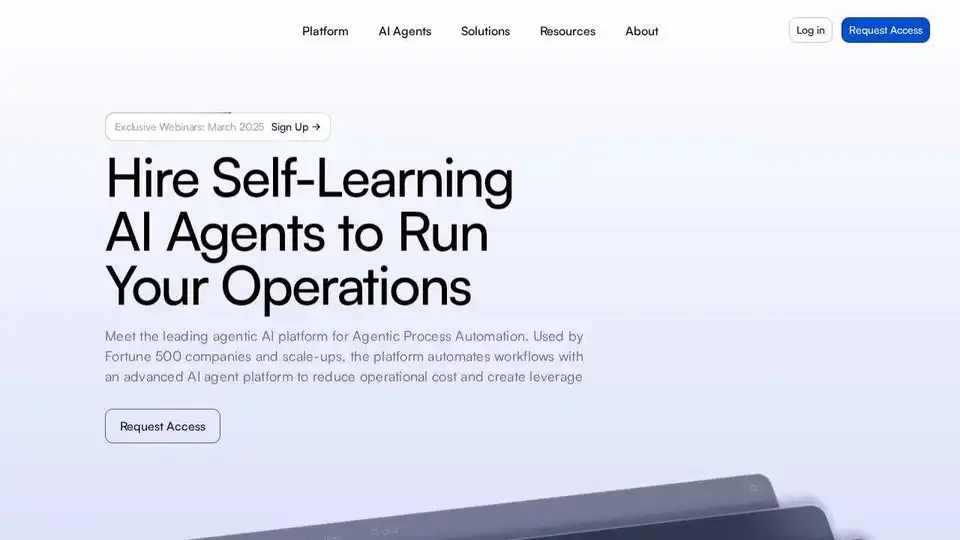
Automate processes with Beam AI, a leading platform for agentic automation. Build & deploy AI agents in minutes, seamlessly integrate into your workflows & reduce operational costs.

Indico Data's Agentic Decisioning Platform automates insurance intake, triage, and decisioning across underwriting and claims with explainable AI. Built for insurance, built for trust.

Kasisto's Agentic AI platform offers personalized banking experiences with KAIgentic AI. Predictive engagement and trusted compliance for financial institutions.
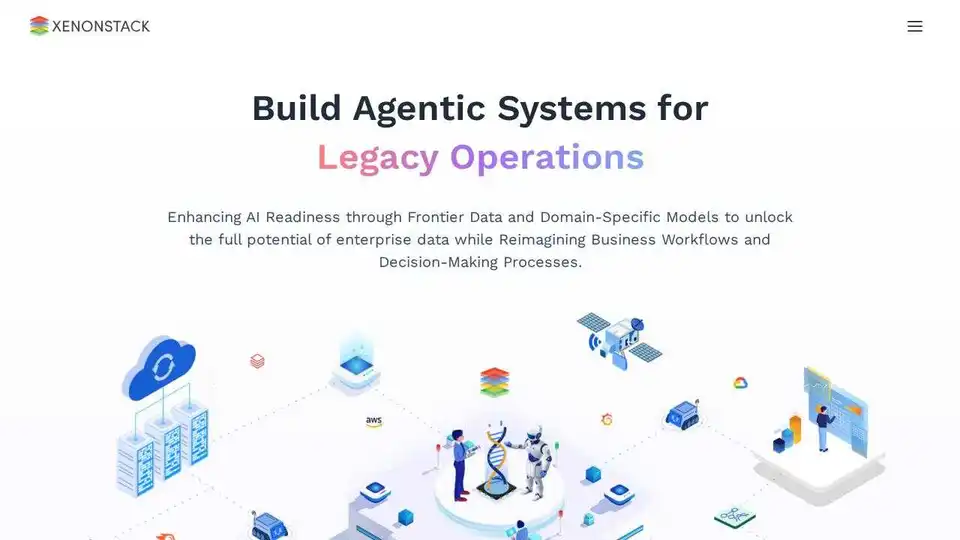
XenonStack is a data foundry for building agentic systems for business processes and autonomous AI agents.

Agentic is an AI-powered blogging platform that helps you create high-quality blog posts with AI agents. Boost your SEO and content creation.
